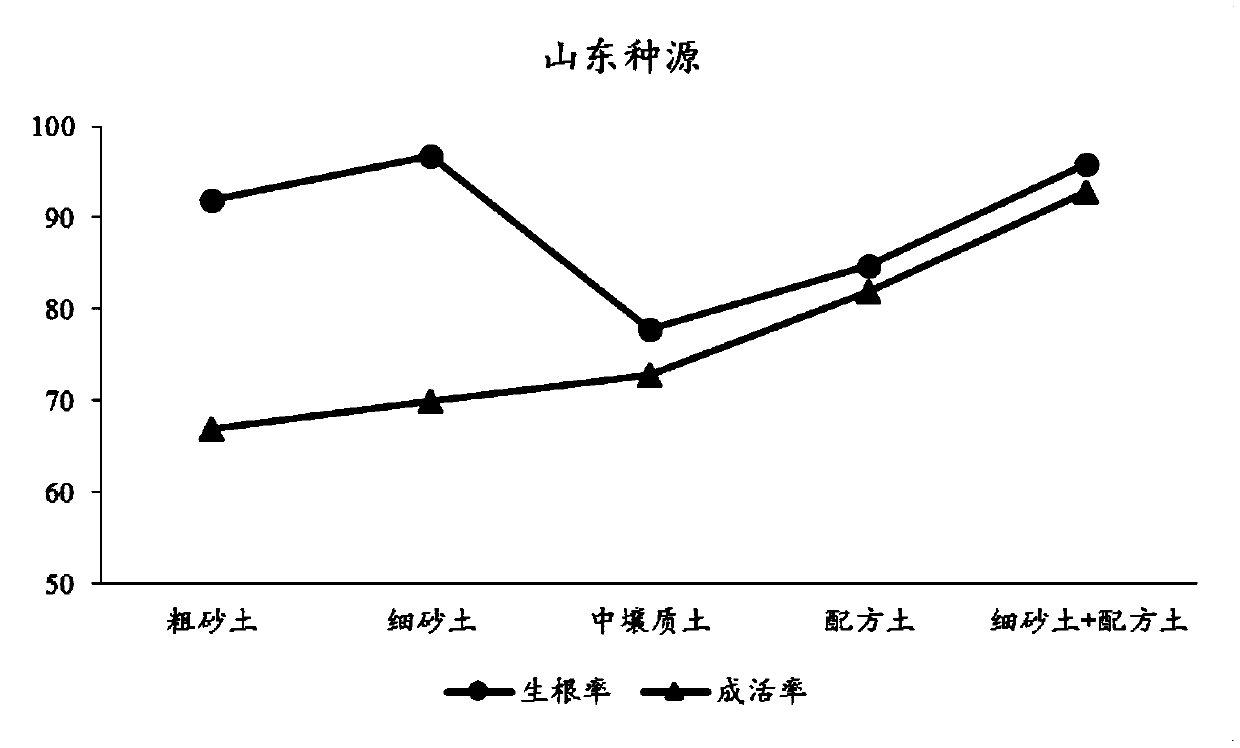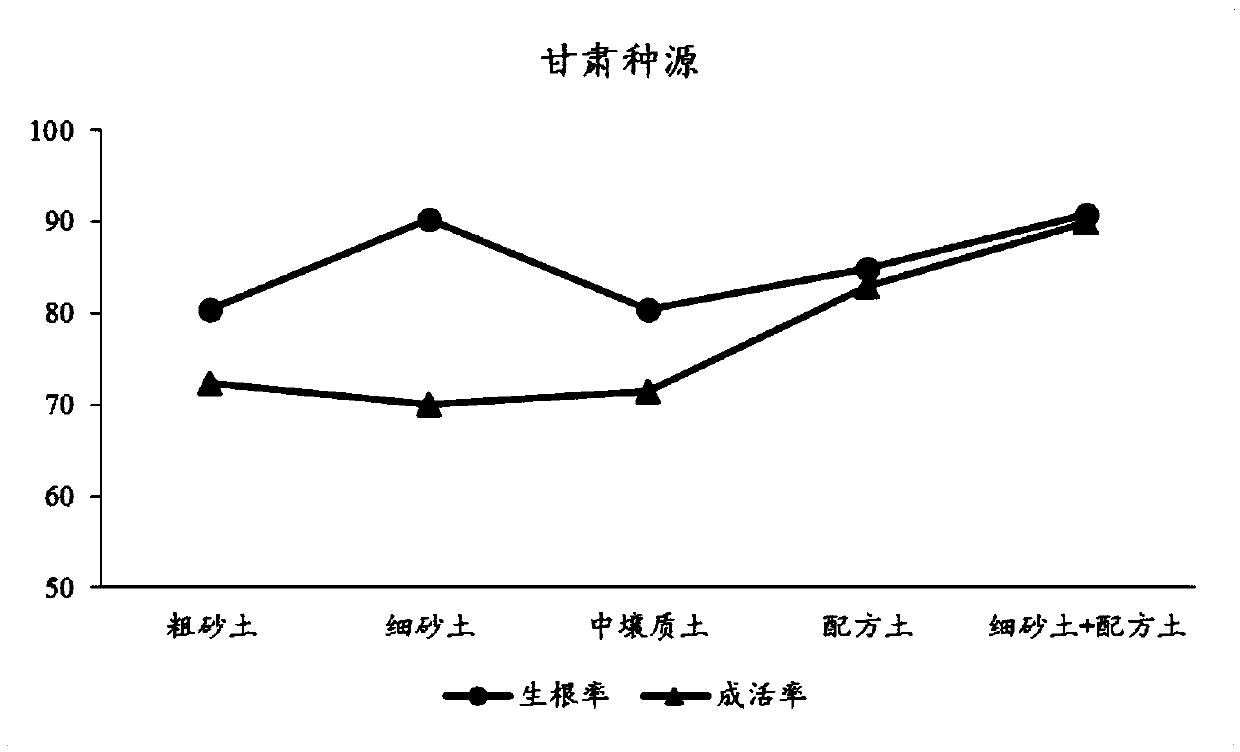Strong root matrix for cutting seedlings and cutting method
A technology for cutting seedlings and substrates, which can be applied to planting substrates, botanical equipment and methods, culture medium, etc., and can solve problems such as reducing the infection rate of germinated seedlings and root rot.
- Summary
- Abstract
- Description
- Claims
- Application Information
AI Technical Summary
Problems solved by technology
Method used
Image
Examples
Embodiment 1
[0033]Using 45 genotype individuals of Populus tomentosa from Shandong provenance, 50 sprouts were selected for each genotype individual. First, wash the fine sand with water, dry it in the sun, put it into a tray with a depth of 5 cm, and sterilize it with 2 g / L carbendazim solution for 6 hours. Cut off at a distance of 8 to 10 cm from the top of the sprouts, leaving the top two leaves, and cut off the rest of the leaves. After soaking the incision with 150PPM concentration of naphthalene acetic acid (NAA) for 10 seconds, insert it into the fine sand that has been drilled 2cm deep. Keep sandy soil humidity 85%, growth environment temperature 28 ℃, air humidity 80%, rooting period is three weeks (21 days), investigate the rooting rate and root system characteristic of germination (such as figure 1 and shown in Table 1). Then transplant the rooted seedlings to the strong root matrix (the weight ratio of medium loam: vermiculite: perlite: peat: Huaduoduo 15 is 2:1:1:2:0.1), an...
Embodiment 2
[0040] Using 50 genotype individuals of Populus tomentosa from Beijing provenance, 50 sprouts were selected for each genotype individual. First, wash the fine sand with water, dry it in the sun, put it into a tray with a depth of 5 cm, and sterilize it with 2 g / L carbendazim solution for 6 hours. Cut off at a distance of 8 to 10 cm from the top of the sprouts, leaving the top two leaves, and cut off the rest of the leaves. After soaking the incision with 150PPM concentration of naphthalene acetic acid (NAA) for 10 seconds, insert it into the fine sand that has been drilled 2cm deep. Keep sandy soil humidity 85%, growth environment temperature 28 ℃, air humidity 80%, rooting period is three weeks (21 days), investigate the rooting rate and root system characteristic of germination (such as figure 1 and shown in Table 1). Then transplant the rooted seedlings to the strong root matrix (the weight ratio of medium loam: vermiculite: perlite: peat: Huaduoduo 15 is 2:1:1:2:0.1), an...
Embodiment 3
[0047] Using 30 genotype individuals of Populus tomentosa from Gansu provenance, 50 sprouts were selected for each genotype individual. First, wash the fine sand with water, dry it in the sun, put it into a tray with a depth of 5 cm, and sterilize it with 2 g / L carbendazim solution for 6 hours. Cut off at a distance of 8 to 10 cm from the top of the sprouts, leaving the top two leaves, and cut off the rest of the leaves. After soaking the incision with 150PPM concentration of naphthalene acetic acid (NAA) for 10 seconds, insert it into the fine sand that has been drilled 2cm deep. Keep sandy soil humidity 85%, growth environment temperature 28 ℃, air humidity 80%, rooting period is three weeks (21 days), investigate the rooting rate and root system characteristic of germination (such as image 3 and shown in Table 3). Then transplant the rooted seedlings to the strong root matrix (the weight ratio of medium loam: vermiculite: perlite: peat: Huaduoduo 15 is 2:1:1:2:0.1), and ...
PUM
| Property | Measurement | Unit |
|---|---|---|
| Concentration | aaaaa | aaaaa |
Abstract
Description
Claims
Application Information
 Login to View More
Login to View More - R&D
- Intellectual Property
- Life Sciences
- Materials
- Tech Scout
- Unparalleled Data Quality
- Higher Quality Content
- 60% Fewer Hallucinations
Browse by: Latest US Patents, China's latest patents, Technical Efficacy Thesaurus, Application Domain, Technology Topic, Popular Technical Reports.
© 2025 PatSnap. All rights reserved.Legal|Privacy policy|Modern Slavery Act Transparency Statement|Sitemap|About US| Contact US: help@patsnap.com



